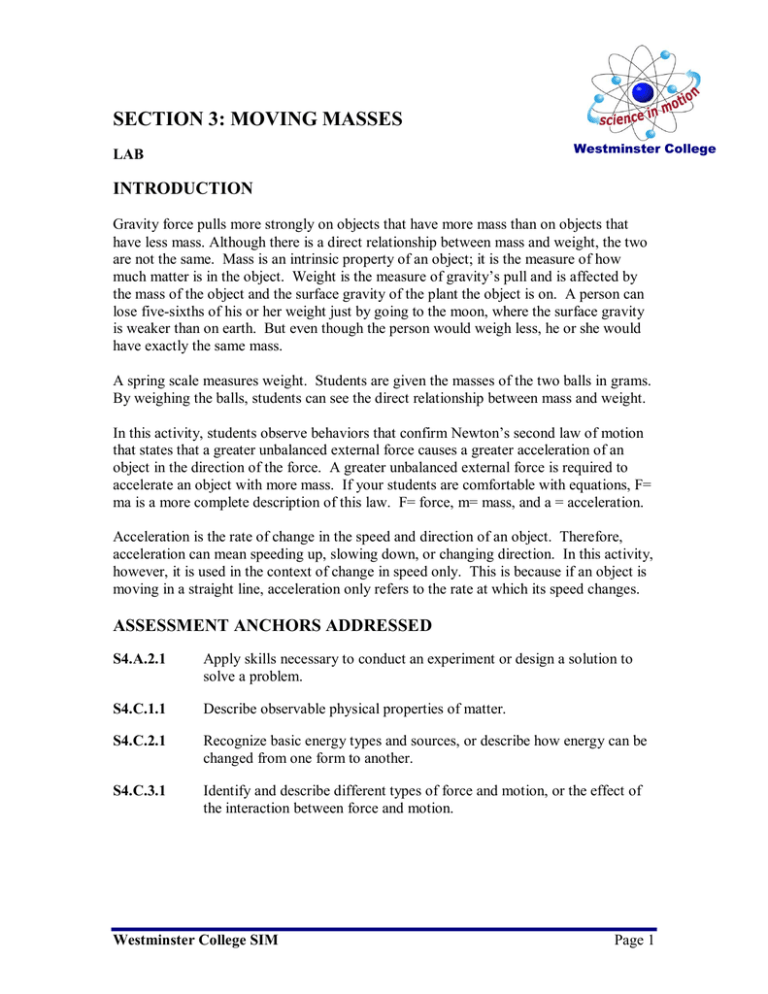SECTION 3: MOVING MASSES INTRODUCTION
advertisement

SECTION 3: MOVING MASSES Westminster College LAB INTRODUCTION Gravity force pulls more strongly on objects that have more mass than on objects that have less mass. Although there is a direct relationship between mass and weight, the two are not the same. Mass is an intrinsic property of an object; it is the measure of how much matter is in the object. Weight is the measure of gravity’s pull and is affected by the mass of the object and the surface gravity of the plant the object is on. A person can lose five­sixths of his or her weight just by going to the moon, where the surface gravity is weaker than on earth. But even though the person would weigh less, he or she would have exactly the same mass. A spring scale measures weight. Students are given the masses of the two balls in grams. By weighing the balls, students can see the direct relationship between mass and weight. In this activity, students observe behaviors that confirm Newton’s second law of motion that states that a greater unbalanced external force causes a greater acceleration of an object in the direction of the force. A greater unbalanced external force is required to accelerate an object with more mass. If your students are comfortable with equations, F= ma is a more complete description of this law. F= force, m= mass, and a = acceleration. Acceleration is the rate of change in the speed and direction of an object. Therefore, acceleration can mean speeding up, slowing down, or changing direction. In this activity, however, it is used in the context of change in speed only. This is because if an object is moving in a straight line, acceleration only refers to the rate at which its speed changes. ASSESSMENT ANCHORS ADDRESSED S4.A.2.1 Apply skills necessary to conduct an experiment or design a solution to solve a problem. S4.C.1.1 Describe observable physical properties of matter. S4.C.2.1 Recognize basic energy types and sources, or describe how energy can be changed from one form to another. S4.C.3.1 Identify and describe different types of force and motion, or the effect of the interaction between force and motion. Westminster College SIM Page 1 Title PURPOSE In this activity, students learn that more massive objects require a greater force than do less massive objects for the same acceleration. MATERIALS For Group For Each Student 1 wooden ball Activity Sheet 3 1 steel ball 1 bag for spring scale Spring scale Hardback book* Teacher provides items marked with * Westminster College SIM Page 2

